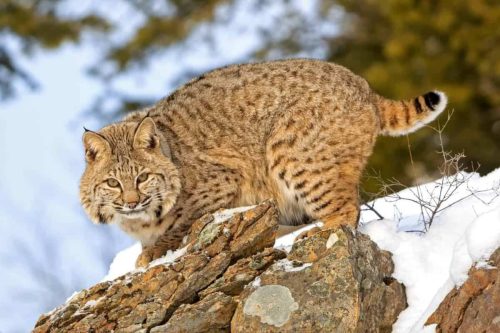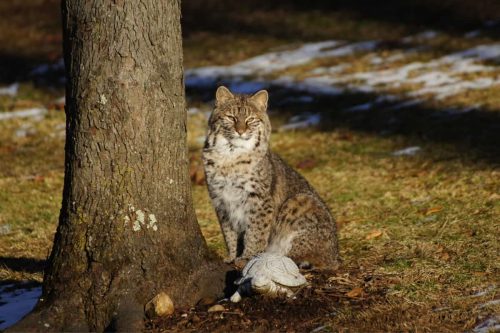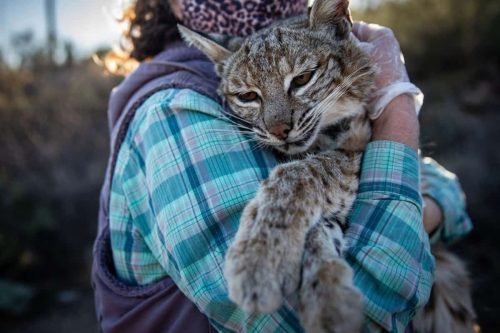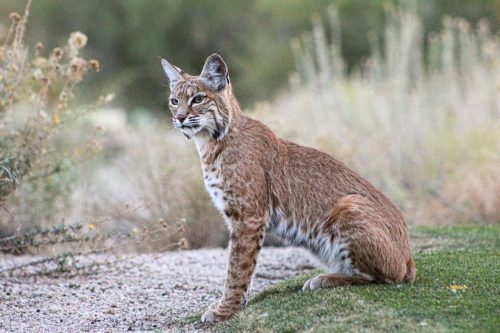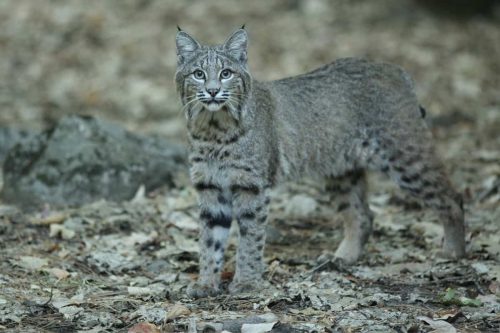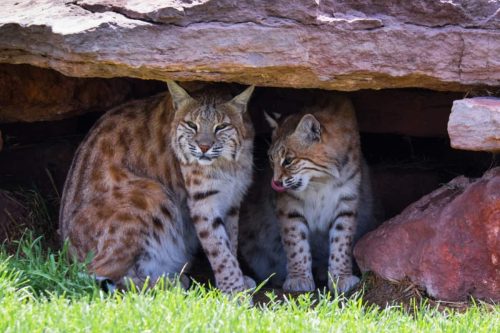The Life Of Bobcat: Are Bobcats Nocturnal, Diurnal or Crepuscular?
Bobcats are medium-sized wild cats that belong to feline animal species. These cats are very well-known in the North American continent and you can witness these cats in Southern Canada, and all the over the USA except Delaware state and in the central parts of Mexico. In these countries, these cats prefer areas like deserts, scrublands, wetlands, forests, and mountains.
You might know a lot of things about these cats still there are certain things about which people are quite confused about them. For instance, are bobcats nocturnal, diurnal or crepuscular? What is the sleeping pattern of a bobcat?
In this article, we are going to answer these questions in detail and clear all your confusion about these animals. Stay tuned.
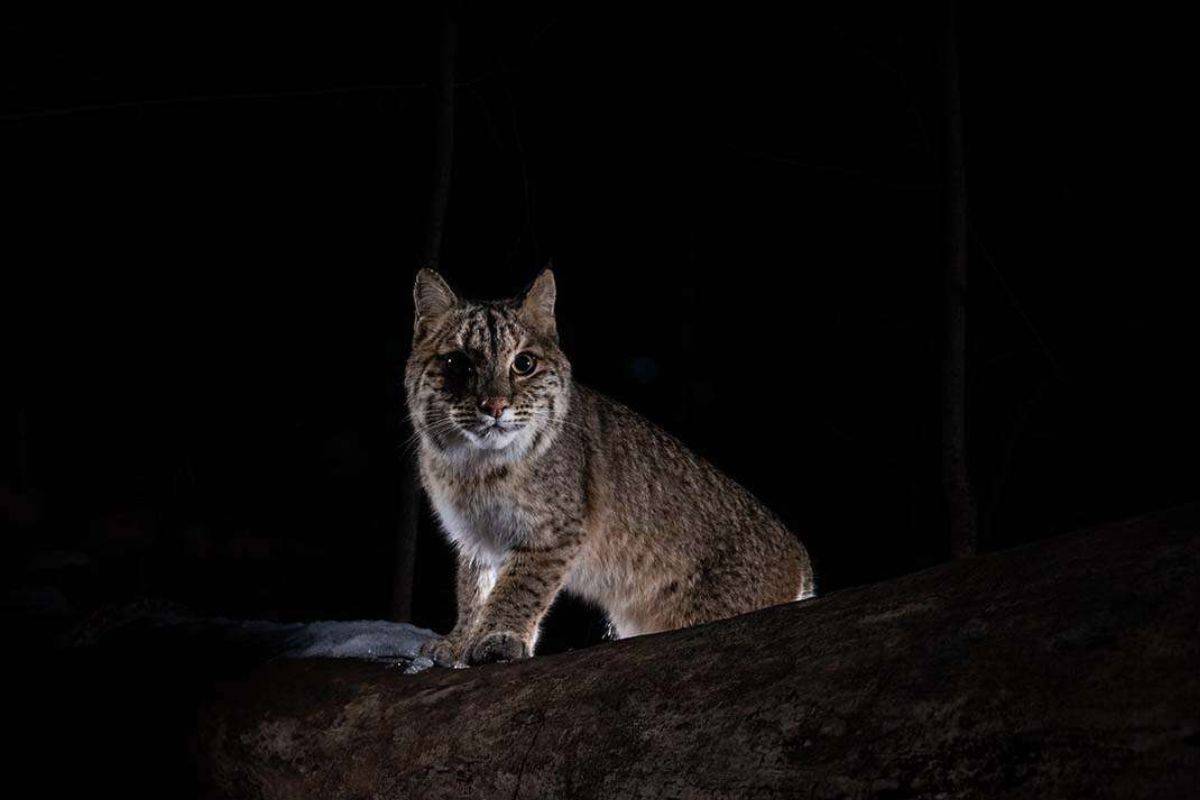
Contents
- Are bobcats nocturnal?
- Are bobcats crepuscular?
- Bobcat sleeping pattern
- Where do bobcats sleep?
- Hunting habits of bobcats
- Do bobcats come out during the day?
- When are bobcats most active?
- Changing activities of the bobcats on the basis of the moon
- Other nocturnal hunters interact with bobcats
- Bobcat eyes at night
- Frequently asked questions
- Conclusion
Are bobcats nocturnal?
In simple words, bobcats are neither nocturnal nor diurnal but they exhibit crepuscular behavior. They remain active during the twilight hours of dawn and dusk. These cats wake up at least three hours before the sun set and hunt until midnight.
At midnight, these cats go back to their dens and wake up again before the sun rises and hunt animals for at least three hours after the sun rises. This hunting habit of the bobcat depicts that these cats exhibit very weird behavior. But we will not declare it nocturnal or diurnal behavior. It is the actual crepuscular attitude of these cats.
This pattern of activity is also not fixed but changed according to prevailing circumstances. There are several things like age, sex, temperature, and season which impact the overall activity pattern of bobcats. For instance, in the winter season, they have to change their overall sleeping pattern. They remain active throughout the day same as humans and sleep in the night hours.
It happens because they can only find their prey in the morning hours rather than in the night hours. It means bobcats are quite flexible in their sleeping schedule and adapt themselves according to the demands of the environment.
Are bobcats crepuscular?
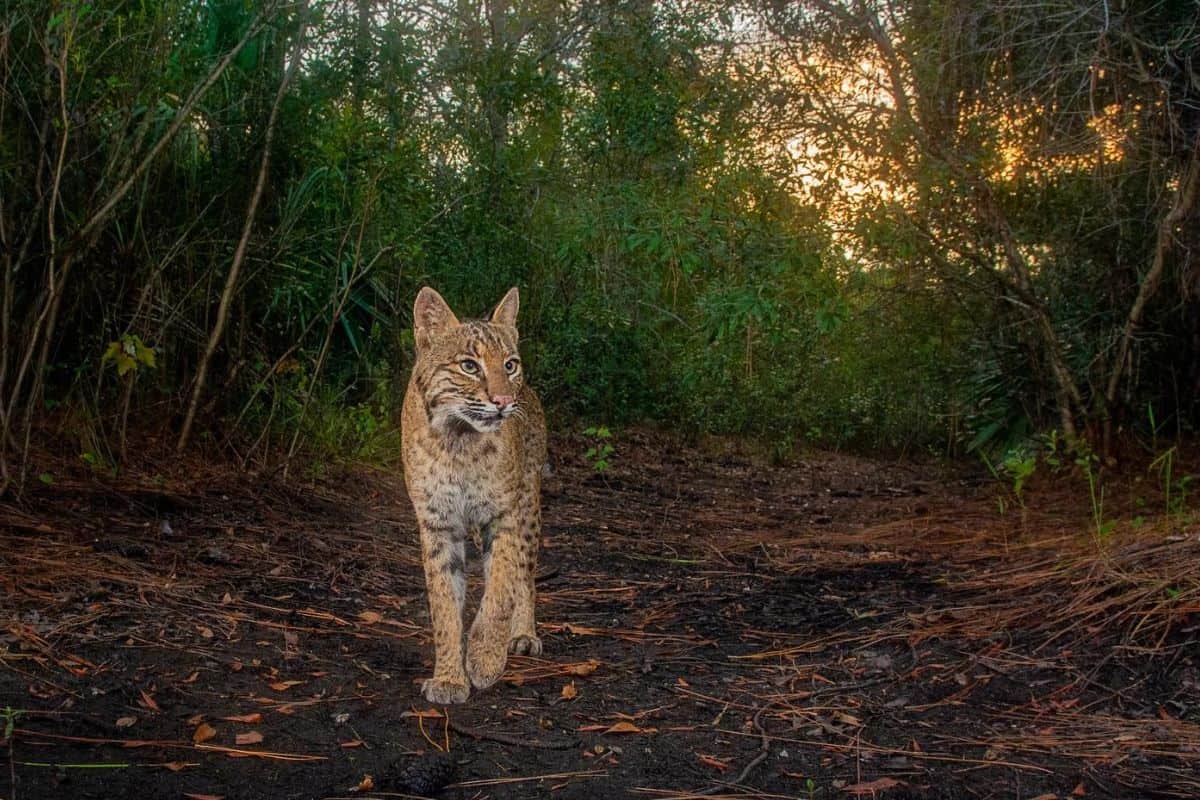
It is said that the bobcats were nocturnal by nature but they converted to crepuscular due to some environmental changes and the settlement of humans in their areas. Now, bobcats exhibit crepuscular behavior like many other animals like bears.
It means these cats remain active under low light conditions of early dawn and dusk hours. They do most of their hunting as well as other activities during this time. Bobcats remain active during this time due to some reasons like cooler temperatures, high quantity of prey availability, and avoiding predators.
Bobcat sleeping pattern
Bobcats exhibit a very peculiar sleeping pattern. These cats like to take series of naps and snooze rather than sleep for very long hours. They take a single nap of at least 3 hours period. This break in the sleeping cycle happens due to several activities like hunting, territory patrols, and grooming activities.
During the day time, bobcats like to sleep in the shelters like hollow logs or trees, rock crevices or formations, and caves. They make a variety of these kinds of shelters in their home range. Bobcats are very territorial by nature and like to make a lot of marking signs around their home territory.
These cats actually mark their territories with the help of urine scent or claw marks on the trees. Bobcats are very solitary by nature and usually meet with their sexual partners during the mating season only.
Where do bobcats sleep?
Bobcats make several dens within their territorial range including one main den called a natal den. These dens are utilized for various purposes and sleeping is also one of them. Other than sleeping, bobcats also use these dens as a protection hub from their predators, to maintain their own privacy and female cats use these dens, especially for the nourishing of their kittens.
On the rocky terrains, they also like to occupy the dens of several other animals by making just a little bit of changes in them. Bobcats are also quite conscious about choosing the location of their den. They choose a place where they will be safe from their predators and other disturbances, and also must have a proper dense cover as well as a good shelter from harsh weather.
In this regard, we can say areas like shrub patches, cliffs, and densely vegetated cover areas are considered ideal for bobcat dens. In some cases, bobcat dens were also seen near wet places like lakes, near caves, and under ledges. Female bobcats make shallow-type dens to provide maximum protection to their kittens.
Moreover, female bobcats also use hollow logs, rock shelters, and the roots of fallen trees as a source of protection for their kids. For extra protection or to completely hide or cover the place, female bobcats also cover their dens with dry leaves and the remaining moss.
Hunting habits of bobcats
Both the hunting and sleeping habits of the bobcats are very weird in nature. Bobcats set their routine according to the routine of their prey. For instance, several small animals like rabbits, hares, and rodents only come out during the twilight hours and it also forces the bobcats to come out during these hours to hunt down a good quantity of food.
Sometimes bobcats also have to travel a lot if they don’t match their hunting routine with the daily routine of their prey. On average, bobcats travel 5 to 8 miles in a day. During the day time, some bobcat’s prey like gray squirrels and birds remain active and bobcats have to come out in search of these animals at this time. Some other prey like cotton mice comes out after the afternoon and remain active till midnight.
For these animals, bobcats wake up before the sun rises and remain active till midnight. Some potential prey of bobcats like raccoons and white-tailed deer also remain active 24 hours a day. These kinds of prey are easy to catch as they are easily available at any time of the day.
Do bobcats come out during the day?
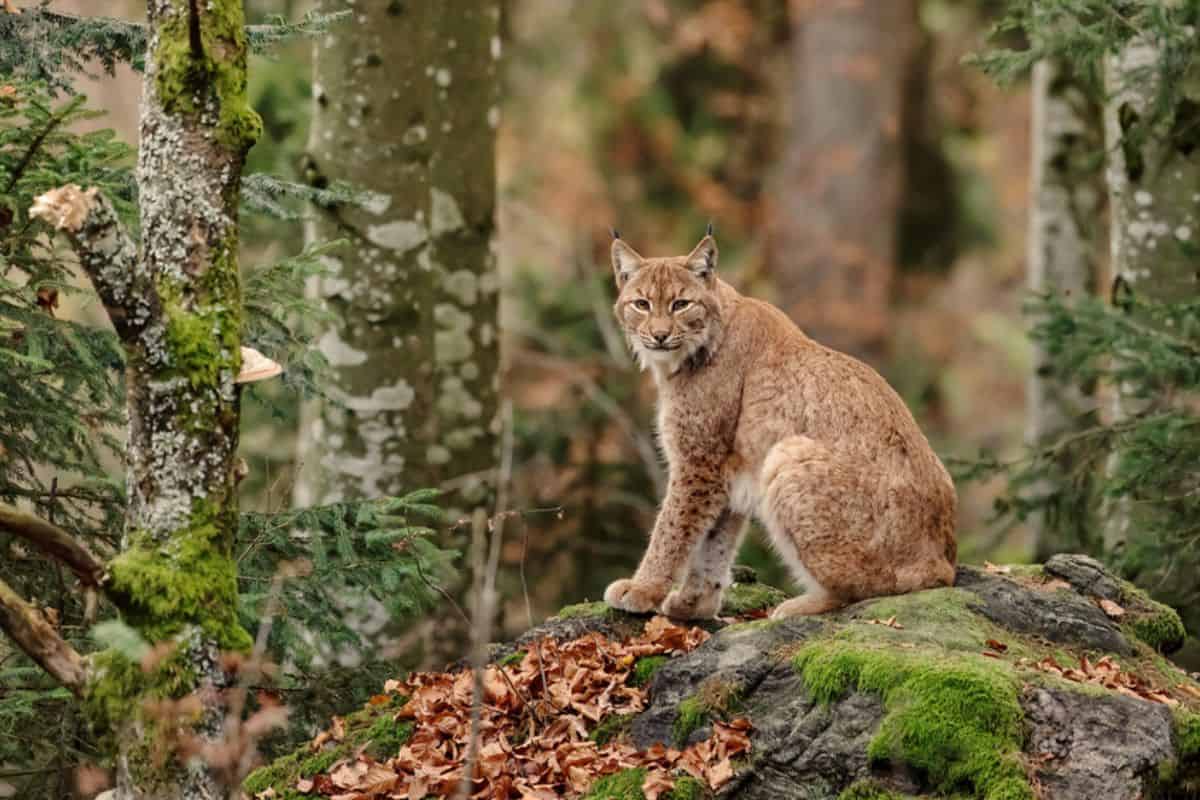
Yes, the bobcat can come out at the night. It rarely happens that you will see bobcats out in the daytime doing various activities, especially hunting. It usually happens when they could not get enough food in the winter and they have to fulfill their dietary needs by doing extra labor and by coming out in the daytime. They also adopt diurnal behavior due to extreme temperature patterns at night time, especially in the winter.
When are bobcats most active?
Bobcats’ activity patterns vary from one region to another and from one type of climate to another. However, these cats remain the least active during day time. Moreover, they will not come out whenever they know there is no prey available for them outside. They think it is better to sleep in the den than roam without any purpose outside.
In colder climates, bobcats usually exhibit diurnal behavior rather than nocturnal or crepuscular behavior. They become diurnal in the winter due to Extreme temperatures, low light availability, less prey availability, and more snow cover. Let’s have a look at the bobcat’s activity pattern on the basis of their area of living and season.
| Region | Winter | Summer |
|---|---|---|
| North USA & Canada | Crepuscular, diurnal | Nocturnal or crepuscular |
| Southern USA & Mexico | Nocturnal or crepuscular | Nocturnal or diurnal |
Changing activities of the bobcats on the basis of the moon
Like human beings and several other animals, bobcats also change the pattern of their activities according to different phases of the moon. In one of the studies by experts, it has been estimated that bobcats have to make 44% more movements during twilight hours as compared to their movements in the lunar period.
It means prey remains less active during the bright moonlight and bobcats have to do a lot of struggle to meet their feed needs. On these nights, prey also takes full advantage of the moon light to go and hide somewhere.
Other nocturnal hunters interact with bobcats
Bobcats like to overlap their territory with other animals. It is more likely done by the male bobcats. In this way, they can catch their prey but sometimes they also become a victim of their predators like cougars and wolves. These animals are also nocturnal hunters and most of the time share a habitat with bobcats.
These animals usually target bobcat kittens as they are easy prey. If the mother is not around, they might approach the kittens easily but if the mother is available then there is no other way to snatch than first having an ultimate fight with their mothers. That’s why females don’t like to overlap their territory with other animals.
Bobcat eyes at night
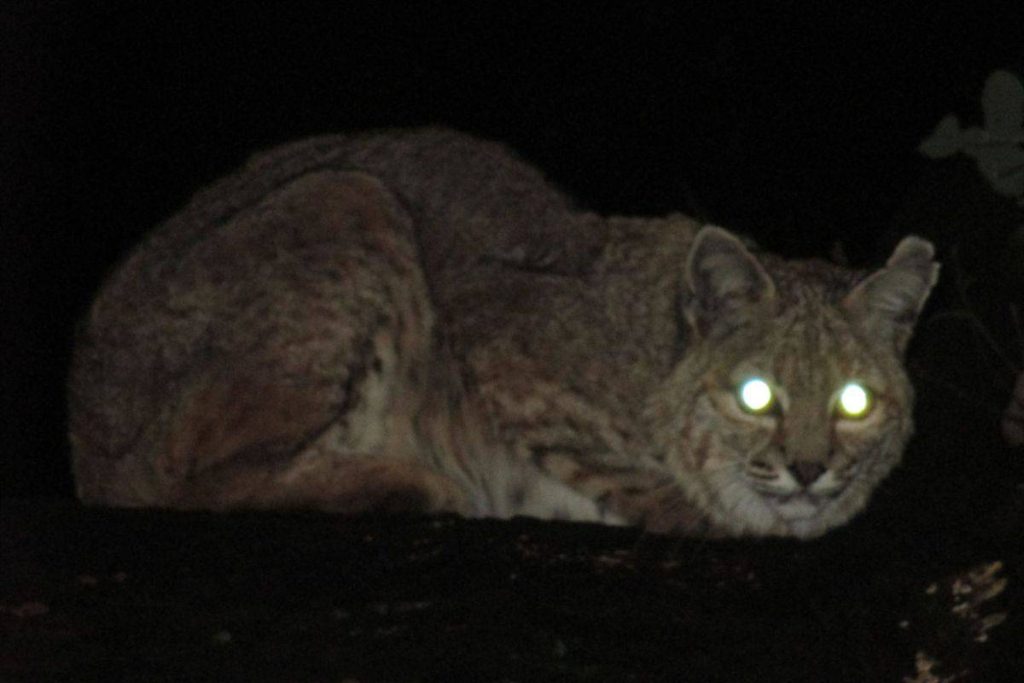
Bobcats have special elliptical-shaped eyes having very large corneas. More light can pass through the eyes and these cats have very good eyesight at the night. Moreover, bobcats’ eyes also come with a special feature named tapetum lucidum. This feature is highly helpful in generating extra glow from the eyes of bobcats.
When the light in the night passes through the cones and rods of the retina of the bobcat’s eyes, it hits the tapetum and reflects back at the source. This amplifies the beam of light entering the eyes. It also improves the overall sighting ability of bobcats.
This extra feature of eyes might improve the overall sighting ability of the bobcats but bobcats still lack premium nocturnal vision. It inhibits the movements of bobcats in the nighttime. It makes it mandatory for the bobcats to only come out to hunt during the twilight hours.
Frequently asked questions
Conclusion
As we have discussed bobcats’ behavior in detail, we have concluded that bobcats exhibit peculiar behavior in their daily life. They follow all the daily living patterns like nocturnal, diurnal, and crepuscular. It depends upon the season, weather, and the availability of prey outside.
Overall, after a very deep study, we have been successful in developing the consensus that bobcat exhibits crepuscular behavior which they could actually convert to nocturnal or diurnal according to the need of time.

Izzy is an experienced ranch worker who has a passion for exploring nature and getting up close to wildlife. With her connections to various animal organizations, Izzy is well-versed in animal care and rehabilitation.

